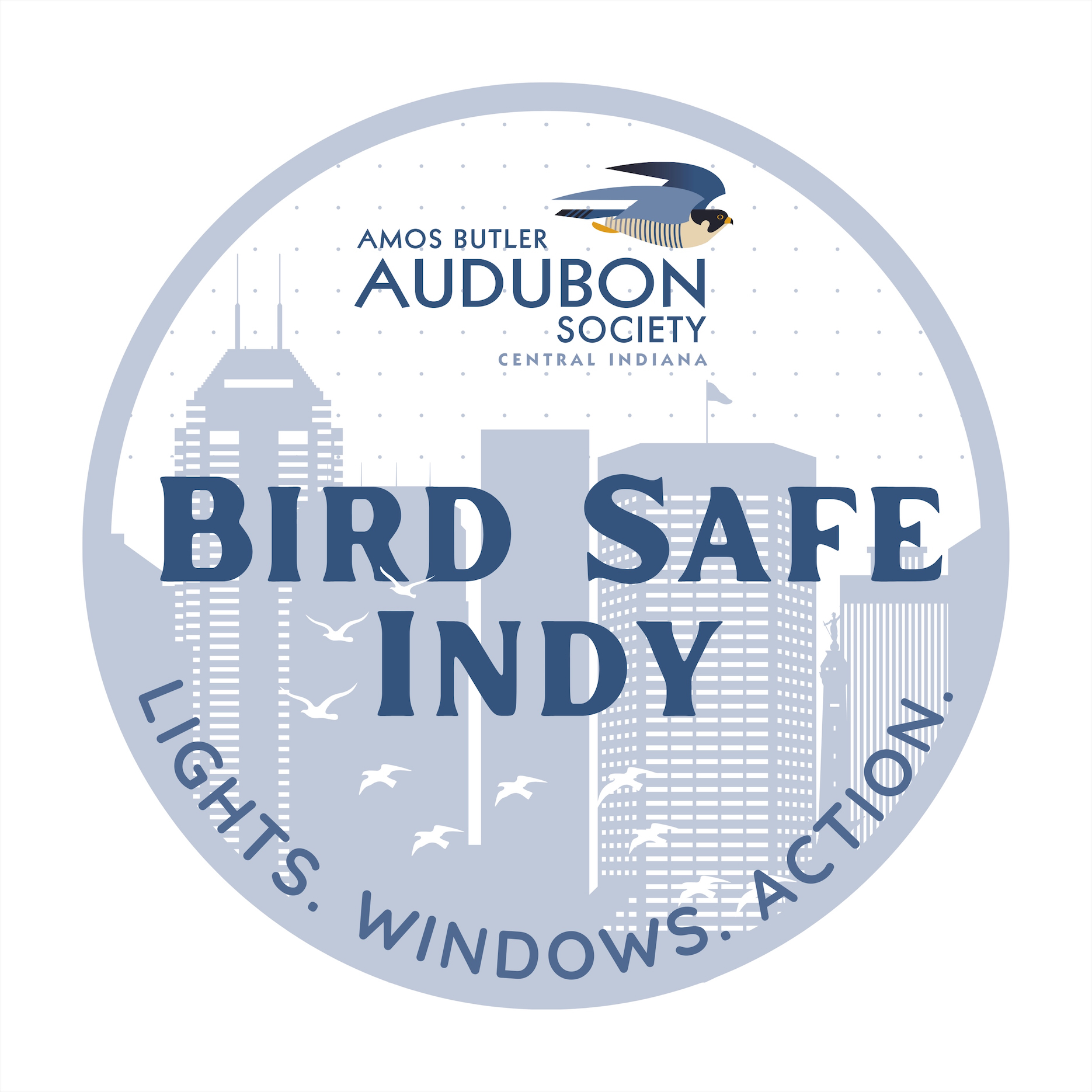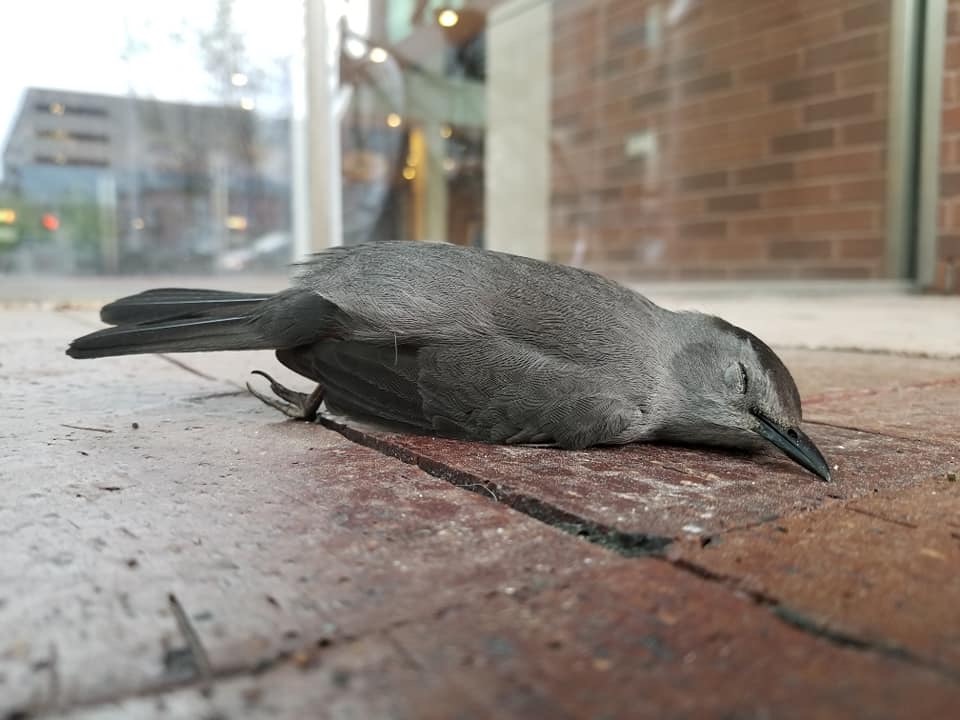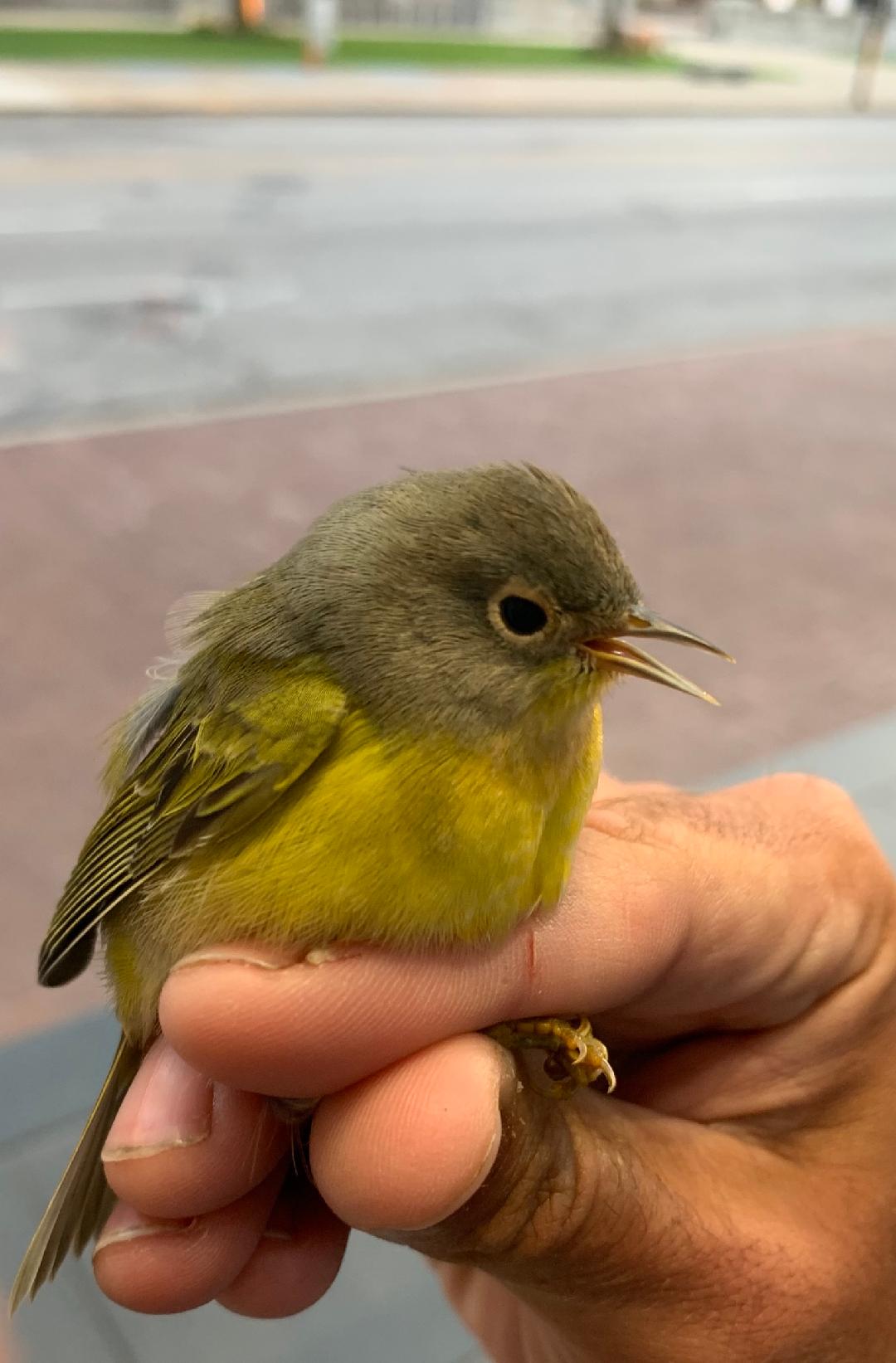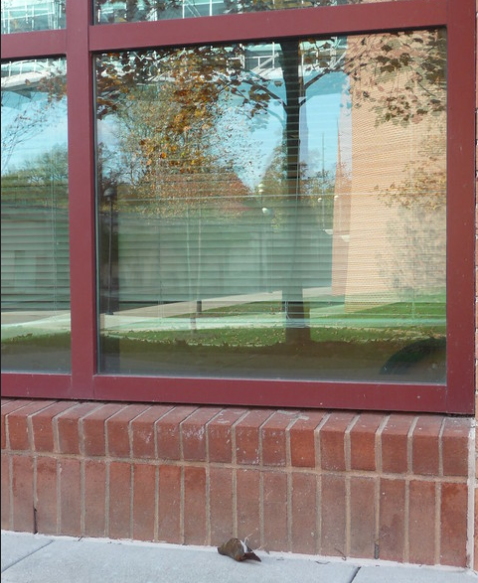
Bird Safe Indy is an initiative of ABAS. Working with partners, such as the City of Indianapolis and building managers, our mission is preventing bird deaths and saving energy by promoting bird-safe buildings and reducing nighttime lighting.
Why is This Important?
Populations of birds have dropped precipitously in the past 50 years, with recent research indicating that as many as 3 billion birds have been lost in North America since 1970. A portion of that comes from window strikes. Estimates vary widely from about 300 million to a startling billion casualties a year in the US alone due to window strikes. Through our Lights Out Indy and now Bird Safe Indy initiative, volunteers have personally witnessed many of these fatalities in Indianapolis.
Birds migrate at night every year by navigation of the moon and stars. These birds become disoriented when flying over brightly-lit buildings in city areas. Confused by the lights, the birds fly into the city, and the urban environment becomes a deadly trap. The birds strike buildings as they arrive. In the morning birds take flight and collide with buildings that have clear or reflective glass. These collisions can kill or injure the bird.


How Can You Help?
Take the actions listed below, especially during the critical migration months of April, May, September, and October. Reducing lighting from midnight to dawn will have the biggest impact.
Building Owners and Managers
- Extinguish decorative exterior lighting, upward-facing lights, and atrium lighting
- If practical, ask cleaning crews to light and clean one floor at a time starting on the upper floors
- Use timers and motion-sensing controls to reduce lighting needs
- Incorporate bird-friendly building design like applying bird tape to windows
Tenants and Business Owners
- Turn off lights and draw the blinds when you leave work
- Use task lighting when working late
- Promote Lights Out Indy through social media or flyers in your office
- Contact us to sign up your business as a participant or encourage your building owner to do so
Residents and Homeowners
- Sign up with us to monitor your downtown building or block for downed birds during migration
- Volunteer to transport injured birds to a licensed bird rehabilitator
- Support bird-friendly legislation with your state and local representatives
- Spread the word to educate the public about how saving energy saves birds
For question or more information contact Austin Broadwater at:
If you have questions about an injured bird please go to our Injured & Orphaned Animals Page HERE
Articles & Scientific Research
Bird-Friendly Building Design
There are a number of principals you can follow to make your home or business safer for birds.
- Install bird-safe glass products that reduce transparency and reflectivity
- Provide each window with exterior screens, netting, or shutters
- Apply films, bird tape, or decals using the appropriate spacing
- Print ceramic patterns onto glass which also adds to aesthetics
- Turn off lights when not in use
- Reduce brightness
- Be cognizant of where vegetation is placed around buildings
Legislation
Legislation can be an important aspect of helping birds that find themselves in the urban environment. Bird-safe building design can be enacted into law and will make a difference for birds. Model legislation is in the American Bird Conservancy document on bird-safe building design. Go to page 32 to see the model legislation.
https://abcbirds.org/wp-content/uploads/2019/04/Bird-Friendly-Building-Design_Updated-April-2019.pdf
Other Lights Out Programs
The first known Light Out program started in Toronto in 1993. In 1999, Chicago started a Lights Out program. ABAS started a Light Out Indy program in 2008. In 2023 ABAS changed the name to Bird Safe Indy to reflect a more comprehensive approach for birds. For more information on other programs, visit the National Audubon site HERE.

